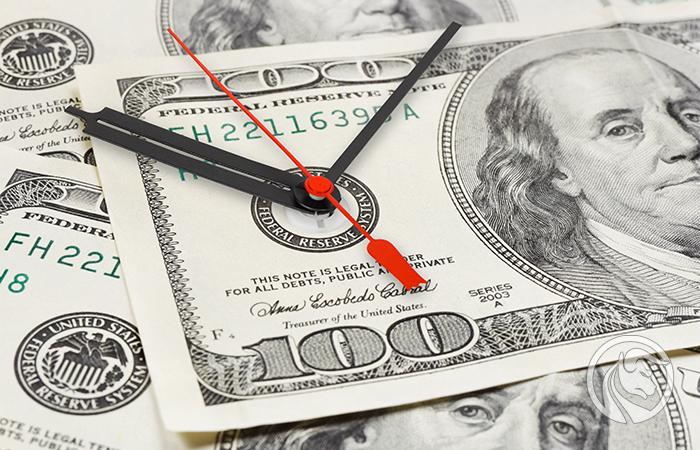Dollar bears celebrate the blue wave in the light version, but what about the feet?
Following the 2020 elections in the United States, markets recognized that the Biden presidency and a divided Congress would benefit asset markets and help weaken the dollar by Fed for maximum policy easing, as the political deadlock was seen as a potential brake to the implementation of wider fiscal stimulus. At first, the rate of depreciation of the USD was not immediately held back by the Democrats taking minimal control in the Senate. This "light blue wave" scenario took the pressure off the Fed to provide all-round support to the economy as investors may have felt that Congress had enough votes, in many cases on both sides of the political scene, to vote for non-controversial, large-scale stimulus. fiscal for individuals, small businesses and infrastructure projects. However, the very slight advantage in the Senate and the slightly tighter control over the House of Representatives does not mean that the Democrats will not face problems when voting for corporate tax reform or climate issues.
About the Author

John Hardy director of currency markets strategy, Saxo Bank. Joined the group Saxo Bank in 2002 It focuses on providing strategies and analyzes on the currency market in line with macroeconomic fundamentals and technical changes. Hardy won several awards for his work and was recognized as the most effective 12-month forecaster in 2015 among over 30 regular associates of FX Week. His currency market column is often cited and he is a regular guest and commentator on television, including CNBC and Bloomberg.
In 2021, the fight against Covid-19 continues
Politically, 2021 will be tackling the pandemic and implementing an increasingly aggressive vaccine program as manufacturing and logistics issues are addressed in Q19 and Q68 and before fall. At the same time, in the context of huge US deficits and the fact that bailout checks and other forms of fiscal support further aggravate US external deficits, inflation will eventually start to rise and real interest rates will fall. The effects of the political reaction to Covid-68 are clearly visible, for example, in the case of the US trade deficit. According to the latest data, in November it exceeded USD -2020 billion, the second highest level in history, and excluding gasoline, it was also USD -24 billion, a record level given the relative energy self-sufficiency of the United States. By comparison, by March 50, the XNUMX-month moving average of the trade balance was below -XNUMX billion USD. With next year's government bond issuance well above the current level of Fed asset purchases announced, the number of buyers will be lower, especially if US consumers are focused on spending money after a year of lockdowns and savings.
Additional fiscal stimulus will only increase deficits, as for the United States, particularly in a lockdown context where service activities are limited, the incentives generally translate to purchases of goods manufactured in China and elsewhere. In fact, the strengthening of the CNY became the dominant topic in the second half of 2020 thanks to the turbo-charging of export demand, which also enabled the People's Bank of China to maintain a relatively tight monetary policy in order to deleverage certain parts of the economy. In addition to higher central bank rates and implications for carry deals, this also led to spectacular growth in the Chinese stock market. We discuss China in more detail below, but we have doubts whether the renminbi will repeat these results in the near term, because any further significant strengthening of the Chinese currency may be associated with numerous problems for the Middle Kingdom, in particular with an even greater loss of competitiveness in terms of labor and export costs even if a strengthening would allow some of the offsetting of the rise in foreign commodity prices. It may be stabilization, but it is not a force in itself.
Higher interest rates are a problem
Thus, we came to a potential problem of facilitating the depreciation of the dollar despite the convincing foundations for the weakening of the USD as outlined above: an upward yield curve and further increases in US long-term bond yields, which broke above key thresholds - such as 1,00% for benchmark 2021-year bonds treasury - in the first week of 80. Apart from everything else, higher yields are a form of tightening financial conditions, and on a global scale, because USD has the status of a reserve currency. Naturally, this may reflect greater optimism about the economic outlook, but given the further massive increase in debt due to the pandemic response, the level from which higher rates are becoming a problem has plunged, as it has in every cycle for years. 2018. Recall that by the end of 3,0, the 2-year US bond yield of 2,25 +% and the limitation of the Fed's expansion of its balance sheet with a rate of 2020-XNUMX% led to a real collapse in the financial markets and forced the Fed to change course. In addition, by the end of XNUMX, global markets were in a speculative frenzy in certain segments, and higher yields would rob the rationale of record-high valuation multiples of the most popular and speculative growth companies.
Whether the problematic US 1,25-year Treasury yield is 1,50% or above XNUMX%, there is a black cloud hanging over them ... unless the Fed implements what it suggested: yield curve control, i.e. imposing a cap long-term government bond yields. This is possible, of course, but the Fed may find it difficult to cut yields from the top or "control the yield curve" if there is a sharp rise in price pressures in a rapidly recovering economy while labor market conditions improve. In summary, asset market volatility becomes an increasing risk with each increase in long-term bond yields; Will the Fed risk the chaos that may follow the introduction of yield curve control amid record easing in financial market conditions? The smooth weakening of the USD observed in the fourth quarter may not be repeated in the first quarter.
Under the ideal bearish bearish scenario, US bond yields will increase moderately and EM currencies and commodities will continue to perform excellently amid rising temperatures and the implementation of an extensive immunization program. From the perspective of valuation and carry transactions, the Turkish lira looks interesting, provided that Turkey avoids geopolitical problems. Other winners in the reflation recovery may be the South African Rand and the Ruble, although in the latter case the Biden presidency means a marked increase in geopolitical risk. In the G-10 basket of currencies, commodity currencies appear less attractive than before the recent boom, although they should be able to cope with a reflective recovery. Furthermore, the SAI remains valuable if the normalization of oil prices continues. Among the G3 currencies, in addition to the USD extensively discussed above, the euro is gaining from the normalization of global export growth, but is held back by less comprehensive domestic fiscal stimulus and a negative central bank rate. On the other hand, the JPY reacts negatively to higher yields and tends to follow the US dollar in individual pairs. The pound sterling is a hard nut to crack: structurally, the negative aspects are the same as for the USD, but its valuation is diametrically different - so the upper limit of growth may turn out relatively low in the context of economic recovery.
The biggest change in the world's monetary system in several decades?
In the long run, the major challenge facing the US dollar may be directly existential if the world begins to lose confidence in the "faith and credit" offered by the United States. This challenge can take place in two ways. One aspect may be the prospect of negative real interest rates, where overprinting money on the fiscal side causes high inflation that is not sufficiently balanced by the level of the central bank rate - say, inflation of 4% with a federal funds rate of 1%. The rise in the price of gold, bitcoin / cryptocurrencies, hard assets of all kinds, and an unexpected increase in the speed of money circulation due to the massive shift away from dollar-linked, previously risk-free assets such as bills and treasury bonds could theoretically lead to a USD crisis.
Second, the challenge for the US dollar as the world's only real reserve currency is China, which seeks to replace the US dollar in trade relations with the rest of the world. It is both a way to attract global capital, since the Middle Kingdom has acquired the status of a world power on an equal footing with the European Union and the United States, and a method of eliminating the weaknesses of the financial system in the event that Washington uses the USD and the related real control over the world system financial as a weapon to contain China's rise to power, given that rivalry between the two countries can only escalate. The instrument by which China wants to convert the renminbi into a global currency is DCEP (Digital Currency Electronic Payment), also known as "digital yuan". DCEP, which is already being tested in some regions of China, will be of key importance in the so-called a dual circulation policy to maximize domestic growth while continuing to open up the economy and capital markets to the world. Successful implementation of the DCEP in the coming years could prove to be the most important change in the world monetary system since the creation of the Bretton Woods system at the end of World War II.






















![Forex Club – Tax 9 – Settle tax on a foreign broker [Download the Application] Forex Club - Tax 9](https://forexclub.pl/wp-content/uploads/2024/02/Forex-Club-Podatek-9-184x120.jpg?v=1709046278)
![Trading View platform – solutions tailored to the needs of traders [Review] trading view review](https://forexclub.pl/wp-content/uploads/2024/03/trading-view-recenzja-184x120.jpg?v=1709558918)
![How to connect your FP Markets account to the Trading View platform [Guide] fp markets trading view](https://forexclub.pl/wp-content/uploads/2024/02/fp-markets-trading-view-184x120.jpg?v=1708677291)
![How to invest in ChatGPT and AI? Stocks and ETFs [Guide] how to invest in chatgpt and artificial intelligence](https://forexclub.pl/wp-content/uploads/2023/02/jak-inwestowac-w-chatgpt-i-sztuczna-inteligencje-184x120.jpg?v=1676364263)


![WeWork – the anatomy of the collapse of a company valued at $47 billion [WeWork, part II] wework bankruptcy story](https://forexclub.pl/wp-content/uploads/2024/04/wework-bankructwo-historia-184x120.jpg?v=1711729561)
![Adam Neumann – the man who screwed up Softbank [WeWork, part AND] adam neumann wework](https://forexclub.pl/wp-content/uploads/2024/04/adam-neumann-wework-184x120.jpg?v=1711728724)





![How to transfer shares to another brokerage office [Procedure description] how to transfer shares to another brokerage house](https://forexclub.pl/wp-content/uploads/2024/03/jak-przeniesc-akcje-do-innego-biura-maklerskiego-184x120.jpg?v=1709556924)

![The most common mistakes of a beginner trader - Mr Yogi [VIDEO] Scalping - The most common mistakes of a beginner trader - VIDEO](https://forexclub.pl/wp-content/uploads/2024/03/Scalping-Najczestsze-bledy-poczatkujacego-tradera-VIDEO-184x120.jpg?v=1711601376)
![Learning patience: No position is also a position - Mr Yogi [VIDEO] Scalping - Learning patience - No position is also a position - VIDEO](https://forexclub.pl/wp-content/uploads/2024/03/Scalping-Nauka-cierpliwosci-Brak-pozycji-to-tez-pozycja-VIDEO-184x120.jpg?v=1710999249)
![When to exit a position and how to minimize losses - Mr Yogi [VIDEO] Scalping - When to exit a position and how to minimize losses - VIDEO](https://forexclub.pl/wp-content/uploads/2024/03/Scalping-Kiedy-wyjsc-z-pozycji-i-jak-minimalizowac-straty-VIDEO-184x120.jpg?v=1710336731)

















